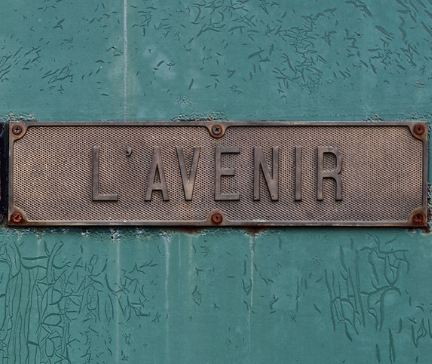L’avenir: The Secret Domain of Dancers

There was a pivotal moment, more than a decade ago, when I suddenly became aware of my autonomy on stage. Despite the plans, control, demands, requests, fancies of any choreographer, in real time, as a performer, I could do whatever I wanted. I was participating in a truly wonderful and unusual work by a Canadian choreographer in New York City. It was site-specific. My pre-show preparations included wandering around a parking garage, where the piece took place, depositing costume bits in nooks and crannies and getting into character (in this case, a film noir femme a la Gilda). There were a lot of different scenes, a rack-worth of custom-tailored costumes for each performer and about two dozen parked cars that served as vantage points for audience members. I knew the choreography well, there were set bits and a lot of room to interpret. For some reason, one afternoon, in the middle of our six-week run, the thought occurred to me that I was totally free. Free to perform a completely different score from that of the choreographer. That we, a cast of ten, could spontaneously recompose the entire work, could decide to throw the show, to surprise one another. Of course, we did not do any of these things. We stuck to the plan, performed as we had rehearsed for the most part, and complied with the authorship of our leader. But that realization, that anything could happen, that the minute the curtain (in this case metaphoric) went up, the performer is set completely free, resounded strongly within me.
We often refer to the dancer as an instrument, a puppet, a vehicle for another’s vision. There is a clear power dynamic in most studios, even the more liberal ones. Though I believe deeply in each performer’s impact on choreography, our roles as dancers often require compliance. We must be good students, good listeners, good employees.
Last week, curator, author and theoretician Andre Lepecki gave a lecture at Kelim Choreography Center in Bat Yam, Israel. During his talk, Lepecki referred to Jacques Derrida’s distinction between the French “future” and “l’avenir” (what is to come). The choreography is the future, a set, knowable, decipherable thing, while the performance is l’avenir, the unknown.
For dancers, this distinction contains a world of empowerment.
The choreographer lives in the “future”, plans the performance, maps out the score, imparts it to their colleagues while the dancer exists in “l’avenir”. The dancer’s true potential, personality, artistry and will come to fruition in “l’avenir”, in the unknowable future. It cannot be rehearsed, foreseen, controlled. It is the chemical reorganization of atoms that occurs to a performer when met with an audience that propels the dancer into this mystifying state of what is to come.
The relationship between choreographer and dancer is built upon an unspoken contract that, when meeting “l’avenir”, the dancer will stick to the “future” forecast. Dancers ensure, through their consistent practice in the studio, that these two tenses will be identical. But they are not. Nor do we want them to be.
In fact, the secret pleasure of the dancer is the knowledge, be it conscious or not, that “l’avenir” belongs to them alone.
Ori J. Lenkinski
